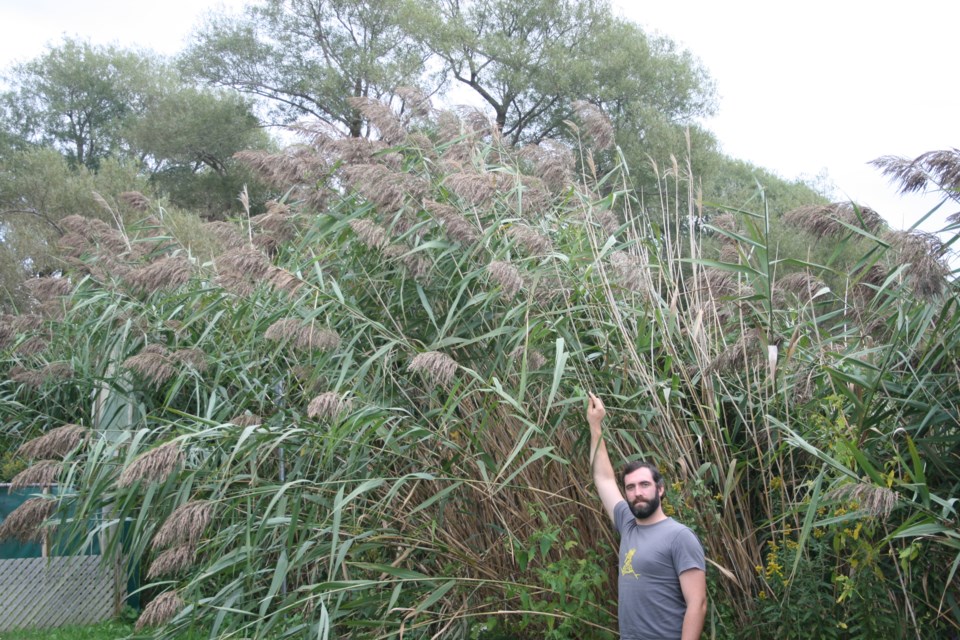You've likely seen it in ditches along area highways, but not realized the danger this plant is posing.
The fast invading plant is also threatening swimming areas. Yes, even your favourite sandy beach is likely under threat.
Ontario’s most invasive plant, Phragmites, is a tall reed, that is spreading fast along shorelines, taking over wetlands and beaches and obstructing views and destroying habitat.
It is a wetland perennial, that can grow up to five metres tall, and has a tassel on the top.
Native species or not? Click here.
It can spread over three metres per year and grows in extremely large, continuous clumps, eliminating habitat for native species and forcing out natural vegetation along Ontario roads, wetlands, and beaches.
Virtually every region of Ontario has been impacted by the steady advance of this plant, which has been identified along Highway 11 and Highway 17, Cochrane, North Bay, and will have serious implications if it spreads further into James Bay.
MNRF spokesperson Jolanta Kowalski, told BayToday that, "MNRF is concerned about the threat that invasive Phragmites poses to our natural resources, our biodiversity, and the economy of Ontario. The boundaries of its northern distribution and spread have not been determined, however, stands of invasive Phragmites have previously been reported in Sudbury, and in Fort Frances."
And before you think they might look nice in your garden, consider this. In November 2016, Ontario regulated Phragmites as a restricted invasive species under the Invasive Species Act, making it illegal to import, deposit, release, breed/grow, buy, sell, lease or trade in the province. It is also illegal to bring Phragmites into provincial parks and conservation reserves - and to possess, transport, deposit or release them in these protected areas.
The plant has spread by almost 30% between 2010 and 2017 with over 5,000 hectares (around 6,000 Canadian football fields) of strongly established colonies in the province.
Last year in Ontario over one million dollars was spent to control the weed.
The plant is native to Eurasia and was first seen in Ontario along the St. Lawrence River in 1916. In 2005, Agriculture and Agri-food Canada identified invasive Phragmites as the nation’s “worst” invasive plant.
It has also become significant, and rapidly increasing budget item for many municipalities as control and eradication become a bigger expense.
Organizations such as Ontario Phragmites Working Group , the Ontario Invasive Plant Council , Nature Conservancy of Canada, Ducks Unlimited Canada, and Ministry of Natural Resources are working to stop the invasion.
On their websites you can find tips on identifying Phragmites, and steps to take to respond to new outbreaks since early eradication remains the first and best step to take.
The Invading Species Awareness Program also has a web-based reporting tool to map invasive plants.
Smaller infestations can be managed by cutting but for significant infestations, herbicide control remains the only viable option.
